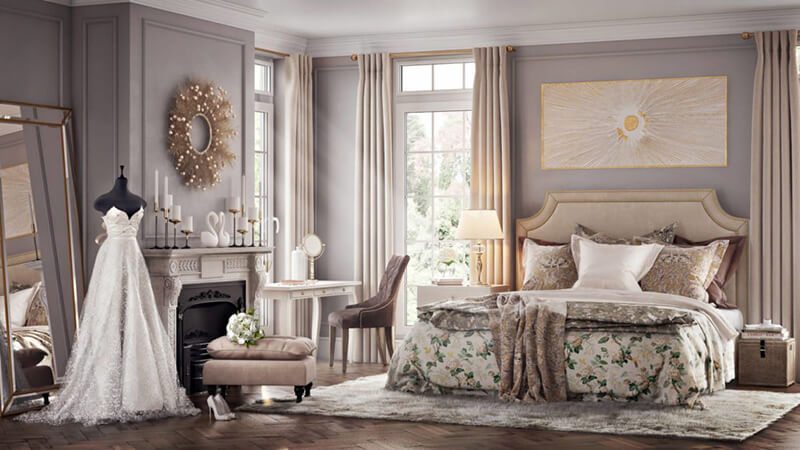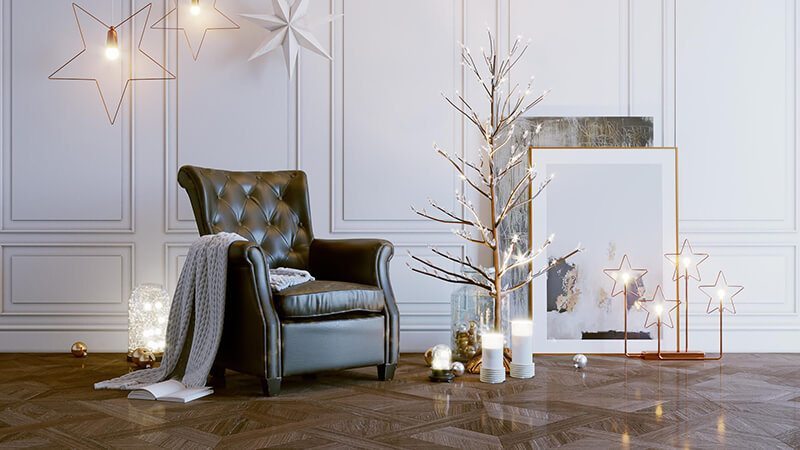Furniture rendering shines when it comes to creating effective and good-looking promotional materials. It works when wide appeal is needed, but how does it handle different scenarios?
Situational marketing is another step of advertising evolution. Right now what matters is not the product that is sold, but the customer it is sold to – or rather how will it benefit them. Individual approach is key, as well as making the buying experience unique and exciting. Just like before, there are two ways to visually advertise furniture: traditional photography and 3D modeling. As an architectural rendering company ArchiCGI believes that furniture rendering is a better option when it comes to ecommerce and situational marketing. There is solid evidence to it – it will bolster your sales in five ways!
Furniture Rendering For Enhancing Situational Marketing
#1. 3D Visualization Offers More Customization

A modern customer loves to tailor goods they want to buy to their taste. Anything that doesn’t offer this possibility is simply overlooked. With photography there would be a ton of work to be done: creating lots of disposable props showcasing all possible options, shooting them and then programming an interactive customiser feature on company’s website. You can mitigate this nightmare with furniture rendering. A 3D object is completely digital and thus can be changed on the fly, providing multiple iterations of the same products, saving you a lot of fuss. You sell furniture of all colors of the rainbow, made from any material that exists on Earth and is available in all shapes and sizes? Not a problem for a team of professional 3D modelers!
#2. CGI Has Better Potential For Interactivity

A unique experience is always interactive. Customization is one thing, but there are other ways of enticing a potential buyer. One of potential ways to implement interactivity would be to creatively demonstrate product features. A website can have a cool feature of “furniture breakdown” in 3D, showcasing merchandise layer by layer. Utilizing new technologies is necessary to keep up with the competition. For example, virtual reality – a relatively new sphere of visual entertainment that has already captivated millions of people. Instead of looking at a flat picture, clients can experience the product in any environment – how exciting is that! The only downside is that the gear for it is still bulky, but that is subject to change. Obviously, all mentioned options require 3D models to work, and furniture rendering is mandatory to providing resources for interactive marketing. These are just the current developments – just remember to keep an eye out for what future has to offer.
Showcase your architectural project like a true work of art, brought to life with cutting-edge AI-powered CGI technology.
#3. 3D Images Can Provide Vital Context To Products

Providing context was an effective marketing tool since the end of 20th century, when advertisers realized that selling ideas is more effective than selling goods. Showing how people can benefit from what a company has to offer boosts sales drastically. Furniture rendering can be used to put products in whatever environments possible. A sofa on the edge of a waterfall? Why not – if it works, that is. Augmented reality is another great technological innovation to provide context. To put it simply, it allows customers to see how products will fit their homes. And no extra gadgets are needed – just a smartphone, and everyone has one these days, right? 3D rendering has unparalleled flexibility when it comes to creating environments – and that is just what modern shoppers want to see.
#4. Photorealistic 3D Can Turn Any Furniture Into An Eye Candy

Unique experience is great, but it needs gorgeous visuals to back it up. While both furniture photography and product rendering are capable of producing Ultra HD 4K images, furniture rendering has more tools when it comes to post-production and vfx. Beveling, chromatic aberration, “god rays” and other lighting effects – to name a few. While good photos can be made even better during editing, a CG image can be made beautiful at every stage. Modern 3D rendering software, like 3DS Max, has built-in engines that realistically simulate various materials and particles, giving 3D furniture models a natural feel and making it stand out to any viewer.
#5. CGI Can Be Reused Without Loss Of Quality

Situational marketing caters to the immense appetite of modern shoppers. Everything has to be provided in bulk, and constantly. Traditional means of making promotional materials simply can’t sustain this amount of work. Furniture rendering, on the other hand, can. 3D models can be saved for later marketing campaigns and refurbished to suit new standards. This would allow companies to save up on advertising campaigns while retaining quality and maintaining a constant stream of income.
Take your design presentation to a new level with interior rendering
Situational marketing is the most effective way of appealing to today’s customers. Classic advertising techniques simply won’t work – you need to modernise. So far furniture rendering is the best solution: it’s flexible, it makes use of cutting-edge technology and it is a valid competitor to photography in terms of quality. Boost your sales with CGI today with our professional 3D rendering services!

Irma Prus
Content Writer, Copywriter
Irma writes articles and marketing copy for ArchiCGI. Her dream is that more people discover the power of CGI for architecture. Irma is into neuromarketing, ruby chocolate and Doctor Who series.



